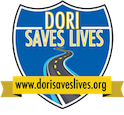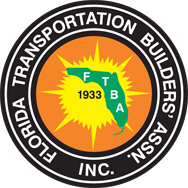316.305 Wireless communications devices; prohibition.—
(1) This section may be cited as the “Florida Ban on Texting While Driving Law.”
(2) It is the intent of the Legislature to:
(a) Improve roadway safety for all vehicle operators, vehicle passengers, bicyclists, pedestrians, and other road users.
(b) Prevent crashes related to the act of text messaging while driving a motor vehicle.
(c) Reduce injuries, deaths, property damage, health care costs, health insurance rates, and automobile insurance rates related to motor vehicle crashes.
(d) Authorize law enforcement officers to stop motor vehicles and issue citations as a secondary offense to persons who are texting while driving.
(3)(a) A person may not operate a motor vehicle while manually typing or entering multiple letters, numbers, symbols, or other characters into a wireless communications device or while sending or reading data on such a device for the purpose of nonvoice interpersonal communication, including, but not limited to, communication methods known as texting, e-mailing, and instant messaging. As used in this section, the term “wireless communications device” means any handheld device used or capable of being used in a handheld manner, that is designed or intended to receive or transmit text or character-based messages, access or store data, or connect to the Internet or any communications service as defined in s. 812.15 and that allows text communications. For the purposes of this paragraph, a motor vehicle that is stationary is not being operated and is not subject to the prohibition in this paragraph.
(b) Paragraph (a) does not apply to a motor vehicle operator who is:
1. Performing official duties as an operator of an authorized emergency vehicle as defined in s.322.01, a law enforcement or fire service professional, or an emergency medical services professional.
2. Reporting an emergency or criminal or suspicious activity to law enforcement authorities.
3. Receiving messages that are:
a. Related to the operation or navigation of the motor vehicle;
b. Safety-related information, including emergency, traffic, or weather alerts;
c. Data used primarily by the motor vehicle; or
d. Radio broadcasts.
4. Using a device or system for navigation purposes.
5. Conducting wireless interpersonal communication that does not require manual entry of multiple letters, numbers, or symbols, except to activate, deactivate, or initiate a feature or function.
6. Conducting wireless interpersonal communication that does not require reading text messages, except to activate, deactivate, or initiate a feature or function.
7. Operating an autonomous vehicle, as defined in s. 316.003, in autonomous mode.
(c) Only in the event of a crash resulting in death or personal injury, a user’s billing records for a wireless communications device or the testimony of or written statements from appropriate authorities receiving such messages may be admissible as evidence in any proceeding to determine whether a violation of paragraph (a) has been committed.
(4)(a) Any person who violates paragraph (3)(a) commits a noncriminal traffic infraction, punishable as a nonmoving violation as provided in chapter 318.
(b) Any person who commits a second or subsequent violation of paragraph (3)(a) within 5 years after the date of a prior conviction for a violation of paragraph (3)(a) commits a noncriminal traffic infraction, punishable as a moving violation as provided in chapter 318.
(5) Enforcement of this section by state or local law enforcement agencies must be accomplished only as a secondary action when an operator of a motor vehicle has been detained for a suspected violation of another provision of this chapter, chapter 320, or chapter 322.
1316.306 School and work zones; prohibition on the use of a wireless communications device in a handheld manner.—
(1) For purposes of this section, the term “wireless communications device” has the same meaning as provided in s. 316.305(3)(a). The term includes, but is not limited to, a cell phone, a tablet, a laptop, a two-way messaging device, or an electronic game that is used or capable of being used in a handheld manner. The term does not include a safety, security, or convenience feature built into a motor vehicle which does not require the use of a handheld device.
(2) It is the intent of the Legislature to:
(a) Improve roadway safety in school and work zones for all vehicle operators, vehicle passengers, bicyclists, pedestrians, and other road users.
(b) Prevent crashes related to the act of driving while using a wireless communications device in a handheld manner when operating a motor vehicle while the vehicle is in motion.
(c) Reduce injuries, deaths, property damage, health care costs, health insurance rates, and automobile insurance rates related to motor vehicle crashes.
(d) Authorize law enforcement officers to stop motor vehicles and issue citations to persons who are driving in school or work zones while using a wireless communications device in a handheld manner as provided in subsection (3).
(3)(a)1. A person may not operate a motor vehicle while using a wireless communications device in a handheld manner in a designated school crossing, school zone, or work zone area as defined in 2s. 316.003(104). This subparagraph shall only be applicable to work zone areas if construction personnel are present or are operating equipment on the road or immediately adjacent to the work zone area. For the purposes of this paragraph, a motor vehicle that is stationary is not being operated and is not subject to the prohibition in this paragraph.
2.a. During the period from October 1, 2019, through December 31, 2019, a law enforcement officer may stop motor vehicles to issue verbal or written warnings to persons who are in violation of subparagraph 1. for the purposes of informing and educating such persons of this section. This sub-subparagraph shall stand repealed on October 1, 2020.
b. Effective January 1, 2020, a law enforcement officer may stop motor vehicles and issue citations to persons who are driving while using a wireless communications device in a handheld manner in violation of subparagraph 1.
(b) Paragraph (a) does not apply to a motor vehicle operator who is:
1. Performing official duties as an operator of an authorized emergency vehicle as defined in s. 322.01, a law enforcement or fire service professional, or an emergency medical services professional.
2. Reporting an emergency or criminal or suspicious activity to law enforcement authorities.
3. Receiving messages that are:
a. Related to the operation or navigation of the motor vehicle;
b. Safety-related information, including emergency, traffic, or weather alerts;
c. Data used primarily by the motor vehicle; or
d. Radio broadcasts.
4. Using a device or system in a hands-free manner for navigation purposes.
5. Using a wireless communications device hands-free or hands-free in voice-operated mode, including, but not limited to, a factory-installed or after-market Bluetooth device.
6. Operating an autonomous vehicle, as defined in s. 316.003, in autonomous mode.
(c) A law enforcement officer who stops a motor vehicle for a violation of paragraph (a) must inform the motor vehicle operator of his or her right to decline a search of his or her wireless communications device and may not:
1. Access the wireless communications device without a warrant.
2. Confiscate the wireless communications device while awaiting issuance of a warrant to access such device.
3. Obtain consent from the motor vehicle operator to search his or her wireless communications device through coercion or other improper method. Consent to search a motor vehicle operator’s wireless communications device must be voluntary and unequivocal.
(d) Only in the event of a crash resulting in death or serious bodily injury, as defined in s. 316.027, may a user’s billing records for a wireless communications device, or the testimony of or written statements from appropriate authorities receiving such messages, be admissible as evidence in any proceeding to determine whether a violation of subparagraph (a)1. has been committed.
(e) Law enforcement officers must indicate the type of wireless communications device in the comment section of the uniform traffic citation.
(4)(a) Any person who violates this section commits a noncriminal traffic infraction, punishable as a moving violation, as provided in chapter 318, and shall have 3 points assessed against his or her driver license as set forth in s. 322.27(3)(d)7. For a first offense under this section, in lieu of the penalty specified in s. 318.18 and the assessment of points, a person who violates this section may elect to participate in a wireless communications device driving safety program approved by the Department of Highway Safety and Motor Vehicles. Upon completion of such program, the penalty specified in s. 318.18 and associated costs may be waived by the clerk of the court and the assessment of points must be waived.
(b) The clerk of the court may dismiss a case and assess court costs in accordance with s. 318.18(11)(a) for a nonmoving traffic infraction for a person who is cited for a first time violation of this section if the person shows the clerk proof of purchase of equipment that enables his or her personal wireless communications device to be used in a hands-free manner.
(5) Notwithstanding s. 318.21, all proceeds collected pursuant to s. 318.18 for violations of this section must be remitted to the Department of Revenue for deposit into the Emergency Medical Services Trust Fund of the Department of Health.
(6) When a law enforcement officer issues a citation for a violation of this section, the law enforcement officer must record the race and ethnicity of the violator. All law enforcement agencies must maintain such information and must report such information to the department in a form and manner determined by the department. Beginning February 1, 2020, the department shall annually report the data collected under this subsection to the Governor, the President of the Senate, and the Speaker of the House of Representatives. The data collected must be reported at least by statewide totals for local law enforcement agencies, state law enforcement agencies, and state university law enforcement agencies. The statewide total for local law enforcement agencies must combine the data for the county sheriffs and the municipal law enforcement agencies.
History.—s. 2, ch. 2019-44.
1Note.—Section 3, ch. 2019-44, provides that:
“(1) The Department of Highway Safety and Motor Vehicles, in consultation with the Department of Transportation, may implement a statewide campaign to raise awareness of and encourage compliance with ss. 316.305 and 316.306, Florida Statutes. The Department of Highway Safety and Motor Vehicles may use television messaging, radio broadcasts, print media, digital strategies, social media, and any other form of messaging deemed necessary and appropriate by the department to implement the campaign.
“(2) The Department of Highway Safety and Motor Vehicles may contract with counties, local law enforcement agencies, safety councils, and public schools to assist with planning and conducting the statewide campaign.”
2Note.—Substituted by the editors for a reference to s. 316.003(101) to conform to the addition of subsections within s. 316.003 by s. 1, ch. 2019-101, and s. 1, ch. 2019-109.









